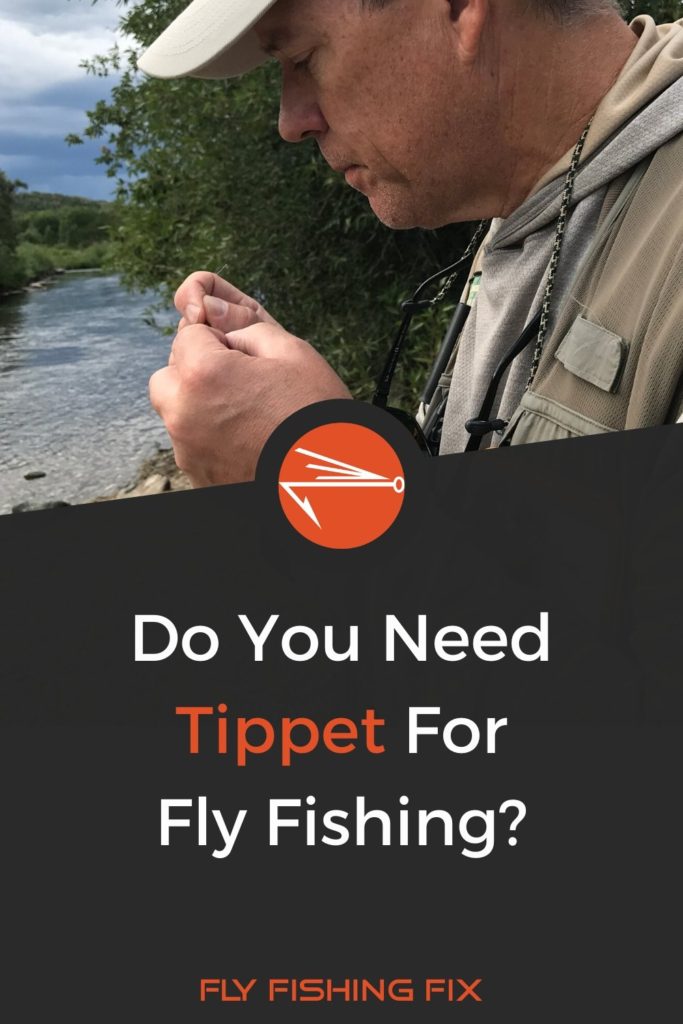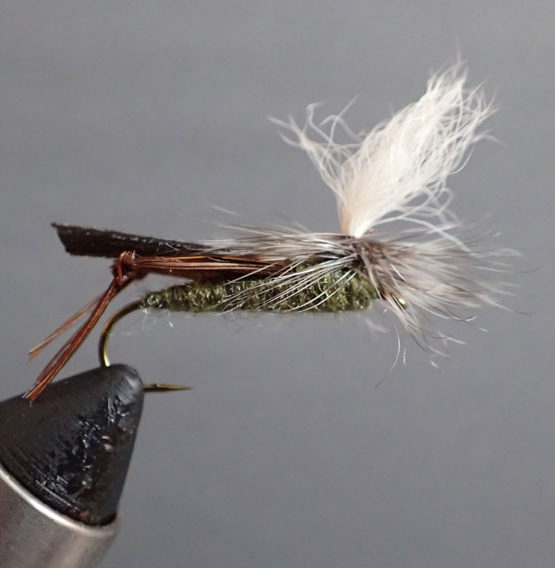Tippet plays a very important role in fly fishing. From extending your leader to setting up a double nymph rig, and even acting as a barrier to keep your weights from sliding down onto your fly, there are numerous uses for this thin, transparent line. But, if you’re new to the sport, and just getting started with the basics, you may be wondering, do you need tippet for fly fishing?
No, you do not need tippet for fly fishing. In fact, it is perfectly acceptable to tie a fly directly to the end of your leader. Only when you are nymphing, or fishing with multiple flies, does tippet become a critical component for your fly fishing rig.
So, how do you know when to use tippet, and when you can get away without it? And what else should you know before you go out and buy a few spools? Well, that’s exactly what we’re going to cover in the rest of this article.
Let’s get started!
Disclaimer: This post may contain affiliate links, meaning we will receive a small commission (at no cost to you) if you click through and make a purchase.When Do You Need Tippet For Fly Fishing?
Though it may be easy to just tie a fly to your leader and get to castin’, but if you want to increase your chances of success, the easy way is often the least effective way. Plus — as I mentioned in the introduction — there are a few different situations that call for tippet in fly fishing.
In this section, I’m going to dive a little deeper into what those situations are, and why you should reach for your tippet spool.
Related Content:
- How Long Does Tippet Last? (Plus 5 Tips To Make It Last Longer)
- 10 Reasons You Should Take Up Fly Fishing
- Do You Need a Strike Indicator? “Naked Nymphing”
- How Much Should You Tip A Fishing Guide?
- 25 Best Dry Flies For Colorado Fly Fishing
- How Often Should You Clean Your Fly Line?
Extending Your Leader
In many situations, as an angler, your leader just won’t be long enough to do the job. Whether it’s because you have been tying flies to it and trimming them off all day, or your leader broke while you were fighting a fish, or maybe it just wasn’t long enough in the first place, tippet is the best way to extend it. This is especially useful when casting to skittish fish. Sometimes, the thickness of a leader is just too intimidating for the fish, and by extending it with a slightly thinner section of tippet, you stand a better chance of catching fish.
Fishing With Multiple Flies
If you want to fish with multiple flies, you are going to need to use some tippet. There is just no other way to accomplish this fly fishing rig setup. For instance, if you are fishing a dry dropper rig, you will need to tie your first fly to your leader, and your second fly to a section of tippet tied to the hook shank of your first fly.
Nymphing With Weight
Whenever you are nymphing, it’s good to add a section of tippet above your first fly. That way, the knot that connects your leader to your tippet can act as a barrier to keep any weights from sliding down onto your first fly. There’s nothing that will wreck a fly presentation more than a big ol’ split shot pressed against the eye of your fly. Trust me, that little knot is the difference between a day of success, and a day of, well, nothing at all.
Saving Money On Leader
I’ll be honest, I catch more fish when I use fluorocarbon leader. However, I rarely buy it because it costs about double the price of monofilament leader. So, over the years, I have learned to buy monofilament leader, and extend it with fluorocarbon tippet. That way, I get the best of both worlds: less expensive leader, with the translucence of fluorocarbon. Can you say more fish per dollar?
In the words of Louis Tully, “that makes good financial sense.”
When Don’t You Need Tippet For Fly Fishing?
There are times when using tippet is just an over-complication of a pretty straight-forward process. So, in an effort to save you a little bit of time and money, here are a couple situations when you don’t need to use tippet.
Fishing With One Fly
If you are only going to fish with one dry fly, or a nymph without any weights, then you don’t need to use a tippet. This is a perfectly acceptable practice, and a good option when you need to change your rig quickly. For instance, if you are fishing a double nymph rig, and you start to notice fish surfacing around you, the last thing you want to do is spend a bunch of time re-rigging, and miss the opportunity altogether. Until you get good enough to quickly re-rig a two-fly setup, you are better off just clipping off your current rig, and tying on a single fly without a tippet.
Streamer Fishing
In many cases, if you are streamer fishing, you should actually avoid tippet altogether. If you’ve ever felt the strong take of a fish on a streamer, you can probably guess why. Fish tend to hit streamers harder than just about any other fly, which can make tippet a bad choice.
Tippet Sizing
Tippet comes in a variety of sizes. And if you want to catch fish, you need to know the difference. Beyond that, the last thing you want to do is spend money on a tippet that’s too heavy or too light for the situation you are fishing.
For instance, if you are going to fish the Bighorn River in Montana where flows are big and fish fight hard, I can tell you that 3X tippet is going to be your best friend. On the other hand, if you are going to fish a small mountain creek, you probably won’t catch diddly unless you are using 6X.
Using the right size tippet is critical to your success as an angler, so to help you out, I put together the following tippet sizing table. Hopefully this will help you determine the right size tippet for every situation.
| Tippet Size | Tippet Diameter | Pound Test |
|---|---|---|
| .015 | .015" | 25lb. |
| .013 | .013" | 20lb. |
| .012 | .012" | 17lb. |
| 0X | .011" | 15lb. |
| 1X | .010" | 13lb. |
| 2X | .009" | 10lb. |
| 3X | .008" | 8.2lb. |
| 4X | .007" | 6.4lb. |
| 5X | .006" | 5lb. |
| 6X | .005" | 3.4lb. |
| 7X | .004" | 2.4lb. |
| 8X | .003" | 1.5lb. |
Tippet Length
In fly fishing, different situations call for different lengths of tippet. So, to give you a good rule of thumb, if you are fishing small streams and creeks, you should plan to use tippet in 1.5 to 2 foot lengths. However, if you are fishing larger rivers you may choose to lengthen your tippet sections to around 2 feet.
In a few situations, I have seen anglers use tippet sections over three feet, but that is very rare.
Part of fly fishing is learning what works best for you, and what brings you the most success. So, if you find that fishing with longer sections of tippet helps you catch more fish, then do your thing. If you find that a short, one-foot section of tippet brings you more success, then more power to you.
Just use the guidelines above to get started, and then find your own way of doing things.
Final Thoughts
Like most things in fly fishing, there is a time and a place for everything. When it comes to tippet, I hope this post provided a bit of clarity on whether or not you need it, and when to use it.
Finally, if you like this post or at least found it helpful, be sure to subscribe to Fly Fishing Fix.
It’ll be the best thing you do all day!
…Unless of course, you are going fishing, which would make it the second best thing you do today.
…Then again, if you drink a beer at the end of the day, this will be the third best thing.
…Alright, if you have two beers, this will be the fourth best thing you do today!
…Then again, if you have steak for dinner… you know what, never mind. I’m sticking with the fourth best thing. This will, absolutely, be the fourth best thing you do today!
Did you really just read all that?!?! Subscribe already!
Join Fly Fishing Fix, Today!











